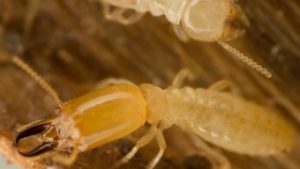 Homeowners should always be on the lookout for termite damage, inside and outside. Termites are the biggest disaster for wood-framed structures; greater than fire, flood and wind damage. Termites cause nearly a billion dollars in damage per year to Australian homes, according to statistics. Learning the basics about termites, such as identification, warning signs, and steps to prevention, is key to protecting your home from termites.
Homeowners should always be on the lookout for termite damage, inside and outside. Termites are the biggest disaster for wood-framed structures; greater than fire, flood and wind damage. Termites cause nearly a billion dollars in damage per year to Australian homes, according to statistics. Learning the basics about termites, such as identification, warning signs, and steps to prevention, is key to protecting your home from termites.
There are two major species of termites affecting Australian homes: Termites living underground, known as subterranean termites, and those that live exclusively in wood, known as drywood termites. Underground termites build colonies in the soil, whereas drywood termites can be found in anything wood from framing, furniture, and wooden flooring.
Both types of termites are most prevalent in places with warmer climates, although subterranean termites can be found in every area of the continent. While you may not need to tell the difference between the two kinds of termites, because any termite damage is bad for your home, a termite expert will identify the species and eradicate the infestation for you.
Many people mistakenly think that termites are only active during Spring. Termites are actually going strong all year round. Swarms are the most visible sign of termite activity, occurring most often in Spring. However, you want to but detect the less noticeable signs of an infestation sooner than later to save yourself much money and stress. Always reach out to a well-reviewed exterminator for help.
Here are the 5 major signs of termite infestation:
Hollow-sounding wood
Termites like dark, humid environments. They do not usually feed on the surface of wood, where they would be visible to the human eye. In fact, the wood’s surface might appear smooth, even if termites are inflicting damage. If wood sounds hollow when tapped, it may be because termites are eating the wood from the inside out.
Swarms of winged insects and shed wings
Reproducing termites called swarmers take flight when they make new colonies. Subterranean termites typically swarm in the spring, whereas drywood swarms are less predictable.
Cracked or peeling paint on wood
Swarming drywood termites can enter through openings smaller than the edge of a coin, so monitor and seal any cracks in the home’s foundation and near roof siding, vents and windows.
Earthen tubules on outside walls
Subterranean termites build mud tubes on surfaces, such as a home’s foundation, to provide moisture while they are searching for food. Store mulch, firewood and wood chips away from the home to avoid creating moisture-rich habitats for termites to survive and thrive.
Frass
Drywood termites produce light brown droppings, called frass, as they eat their way through infested wood. Keep gutters, downspouts and crawl spaces free of debris and cellulose materials to prevent food sources for termites.
Termites pose a serious threat to your biggest investment. If you suspect termite activity, do not delay. Call a licensed pest management company like Pest Free Sydney to do an inspection immediately. Visit http://pestfreesydney.com.au/pests/termites/ for more information on termite pest control in Sydney

